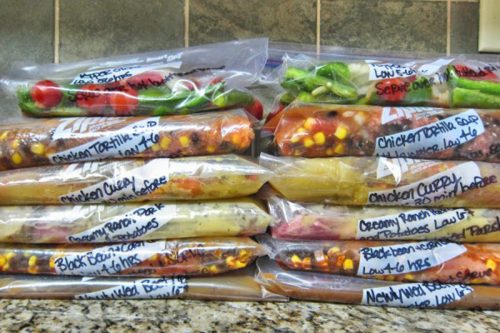HOW TO STORE FREEZER MEALS
Your goal with any freezer meal is to reduce exposure to air. Let your food cool completely (we’re talking room temperature, people), then store it in a freezer-safe container. Plastic bags are common, but it’s friendlier for the planet to use reusable containers with tight-fitting lids.
Some meals, like casseroles, can be frozen in the dish you plan to bake them in — just cover with an airtight lid or a layer of plastic wrap followed by a layer of aluminum foil. Whatever vessel you use, make sure you label it with the name of the dish and the date it was frozen.
HOW TO REHEAT FREEZER MEALS
When you’re reheating already-cooked meals, remember that you just want to warm them up, not cook them. Set your oven to low heat — no more than 350°F — and periodically check your food until it’s heated through. Keep your food from drying out by covering it with foil or an oven-safe lid.
WHAT DISHES FREEZE WELL?
Dishes that are greater than the sum of their parts. Think soups, stews, casseroles (without cream) and basic meat dishes. Meals that can be shredded, stirred, and cooked low and slow tend to do well in the freezer.
WHAT SHOULD YOU NOT FREEZE?
Creamy ingredients like milk and creamy sauces tend to separate in the freezer. Don’t freeze ingredients you plan to eat raw, like lettuce or cucumbers.
HOW DO I AVOID FREEZER BURN?
Minimize exposure to air when you freeze your meals. That means using freezer-safe containers with tight lids or double-layers of foil, and filling your containers close to the top (but not all the way — you want to leave some space for the food to expand as it freezes).
Most foods will freeze well for 3 months. So, write the freeze date on the outside. If you have multiple meals, snacks, or sides frozen you may want to create a cue sheet with the name of each item and the freeze date.




